Emeryville is home to many species of birds, some of which are native to the area and some of which migrate through the area.
The city is home to a variety of habitats, from the marshlands of the San Francisco Bay to the oak woodlands of the East Bay Hills, making it an ideal habitat for many species of birds. In Emeryville, you can find a variety of waterfowl, shorebirds, raptors, and songbirds.
Birdwatching is a popular activity in Emeryville, and the city has a variety of parks and trails that offer excellent viewing opportunities. Whether you’re an experienced birder or just starting out, Emeryville is the perfect place to observe birds in their natural habitats.
1. Willet
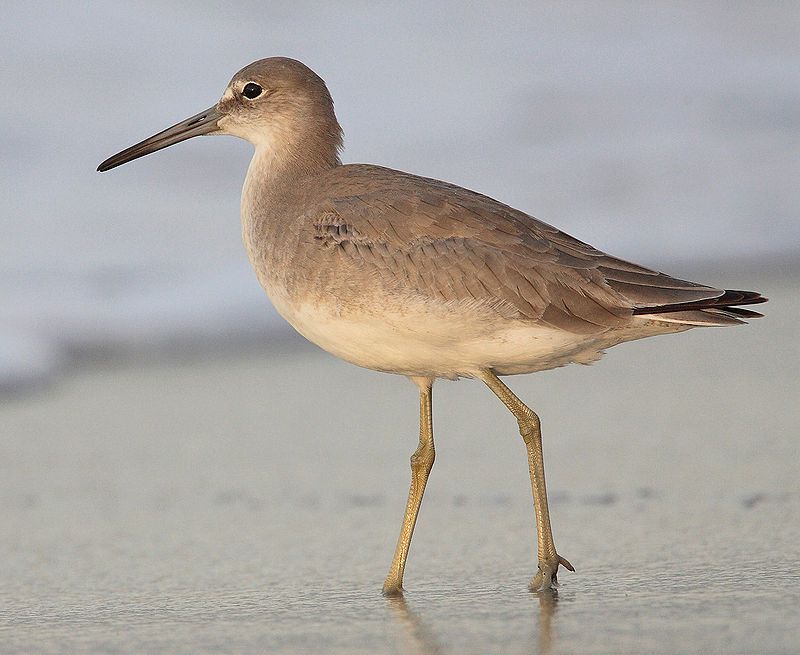
The willet is a member of the Scolopacidae family, which consists of large shorebirds. This particular species is a sandpiper known for its robust size and is the largest of the species belonging to the genus Tringa, which is commonly known as “shanks”.
Willets can be found near coasts, in mudflats and shallow waters, as they feed on small invertebrates, insects, and crustaceans. These birds usually have a brownish-gray upper body, marked with black and white stripes, while the underside is white.
Willets have long, pointed wings and long legs that allow them to wade into the water in search of food. During the breeding season, males perform an elaborate courtship dance by raising their wings and displaying their white undersides.
They build their nests on the ground near water sources, often using dried grasses and other vegetation for insulation.
| Kingdom | Animalia |
| Phylum | Chordata |
| Class | Aves |
| Order | Charadriiformes |
| Family | Scolopacidae |
| Genus | Tringa |
| Species | T. semipalmata |
2. Spotted Sandpiper
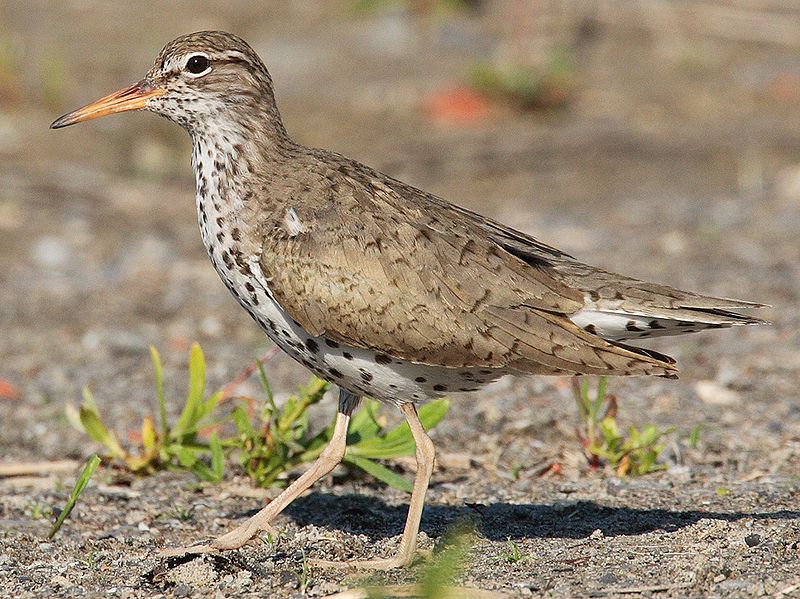
The spotted sandpiper is a species of small shorebird that belongs to the genus Actitis. This genus also includes its sister species, the common sandpiper.
These two species are geographically separated, but occasionally, birds of one species may wander into the habitat of the other and settle down to breed. This can lead to hybridization between the two species, meaning they will produce offspring with traits from both parents.
Hybridization is an interesting phenomenon that can be seen in various species of animals and is especially prevalent among closely related species.
| Kingdom | Animalia |
| Phylum | Chordata |
| Class | Aves |
| Order | Charadriiformes |
| Family | Scolopacidae |
| Genus | Actitis |
| Species | A. macularius |
3. Marbled Godwit
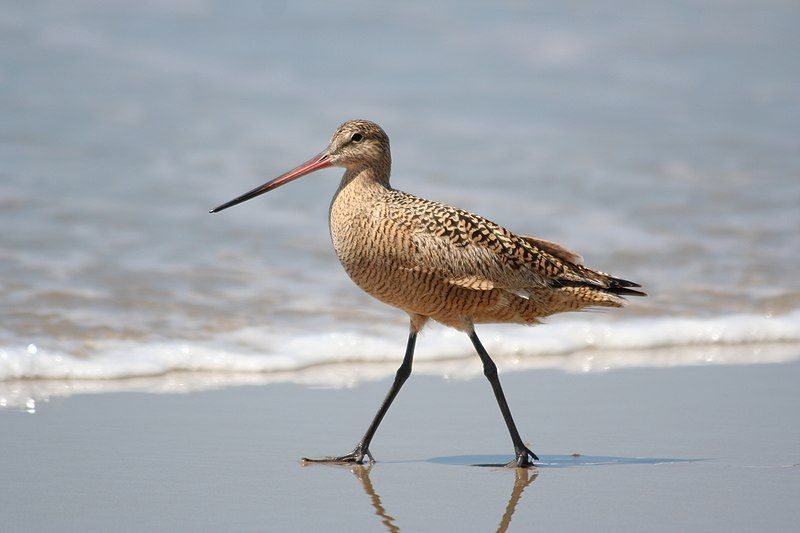
The marbled godwit is an impressive migratory shorebird from the family Scolopacidae. It is a large bird with a wingspan that can reach up to 28 inches and an impressive body length of up to 16 inches.
It has beautiful plumage with a black head, a white belly, and brownish-gray wings.
It is also known for its long, down-curved bill. The marbled godwit is a long-distance migrant, typically flying over 5000 miles from its breeding grounds in Alaska, Canada, and the northern United States to its wintering grounds in Mexico and Central and South America.
It is the largest of the four species of godwits, with an average weight of 8.3 ounces, and is often seen in large flocks on coastal mudflats and wetlands.
It feeds primarily on aquatic invertebrates, such as insects, mollusks, and crustaceans. The marbled godwit is a species of conservation concern due to habitat destruction, overgrazing, and pollution. As a result, its population has declined significantly in recent years.
Conservation efforts, such as the protection of wetlands and estuaries, and the implementation of best management practices in agricultural areas, are needed to protect this species and ensure its future survival.
| Kingdom | Animalia |
| Phylum | Chordata |
| Class | Aves |
| Order | Charadriiformes |
| Family | Scolopacidae |
| Genus | Limosa |
| Species | L. fedoa |
4. American Avocet
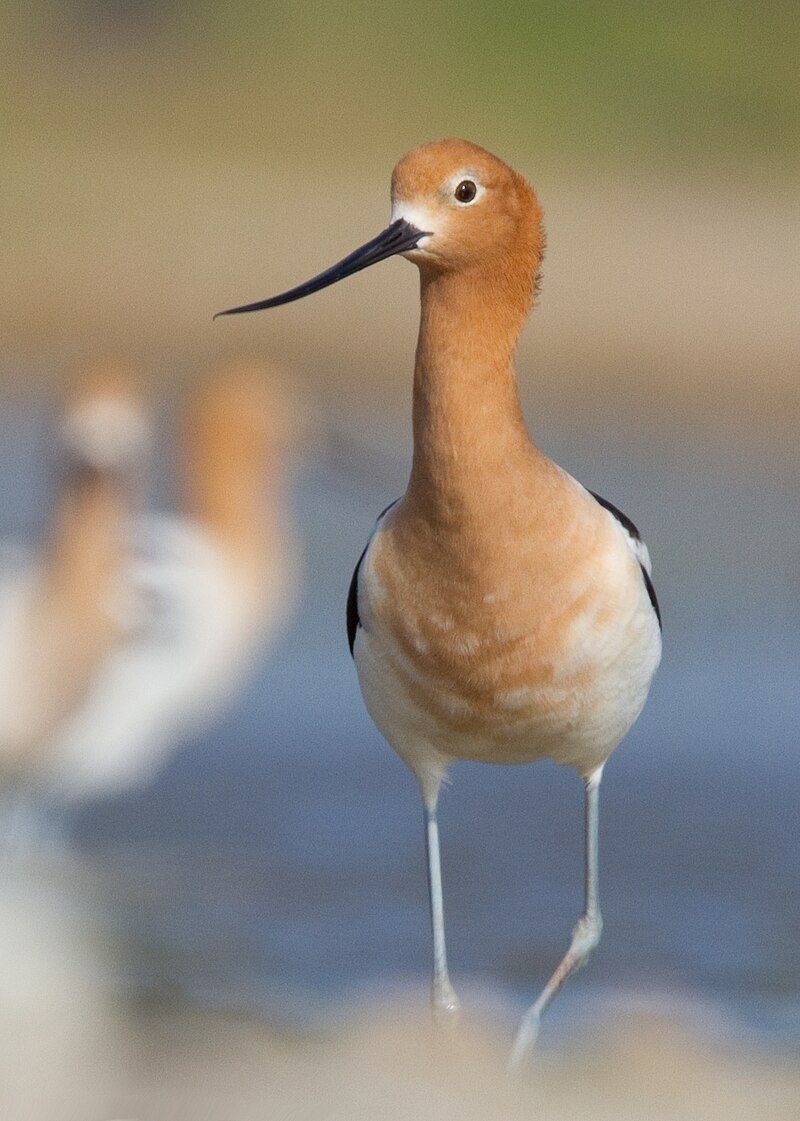
The American Avocet is a unique and fascinating bird within the avocet and stilt family, Recurvirostridae. It is a large wader that can be found in North America. This bird likes to spend a lot of its time foraging for food in shallow water or on mud flats.
The American Avocet is known for its distinctive sweeping bill-side-to-side motion in the water as it looks for crustaceans and insects to feed on. This motion helps the bird to search for food in the shallow water or mud flats it often visits.
The sweeping motion also helps the avocet to stir up small amounts of sediment in the water, exposing small prey that might otherwise be hidden. As a result, the avocet is able to find the food it needs to survive.
The American Avocet is an amazing bird, a great example of adaptation and survival in nature.
| Kingdom | Animalia |
| Phylum | Chordata |
| Class | Aves |
| Order | Charadriiformes |
| Family | Recurvirostridae |
| Genus | Recurvirostra |
| Species | R. americana |
5. Black Bellied Plover
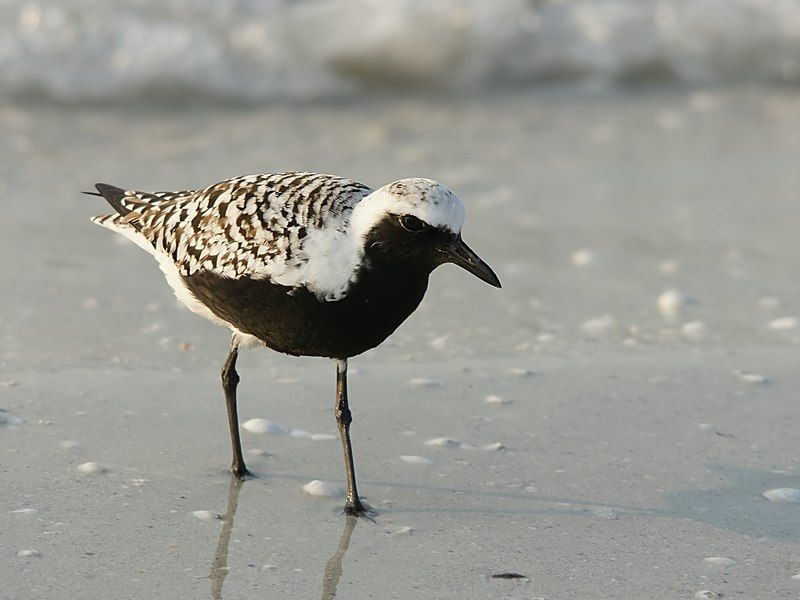
The grey plover, also known as the black-bellied plover in North America, is a large plover species that breeds mainly in Arctic regions. It has a very wide distribution range, covering most of the world’s coasts when not breeding.
During the breeding season it remains in the Arctic, but when it is not breeding it is known to migrate long distances to other parts of the world. This cosmopolitan species is able to adapt to many different environments, from coastal areas to inland wetlands.
It is also highly migratory, with individuals traveling from the Arctic to as far south as South America during the winter months. The grey plover is a relatively common sight in many parts of the world, and it often congregates in large flocks.
Its diet consists of a variety of small aquatic invertebrates, such as crustaceans, mollusks, and insects. It is a species of conservation concern due to habitat destruction and overhunting.
| Kingdom | Animalia |
| Phylum | Chordata |
| Class | Aves |
| Order | Charadriiformes |
| Family | Charadriidae |
| Genus | Pluvialis |
| Species | P. squatarola |
6. Least Sandpiper
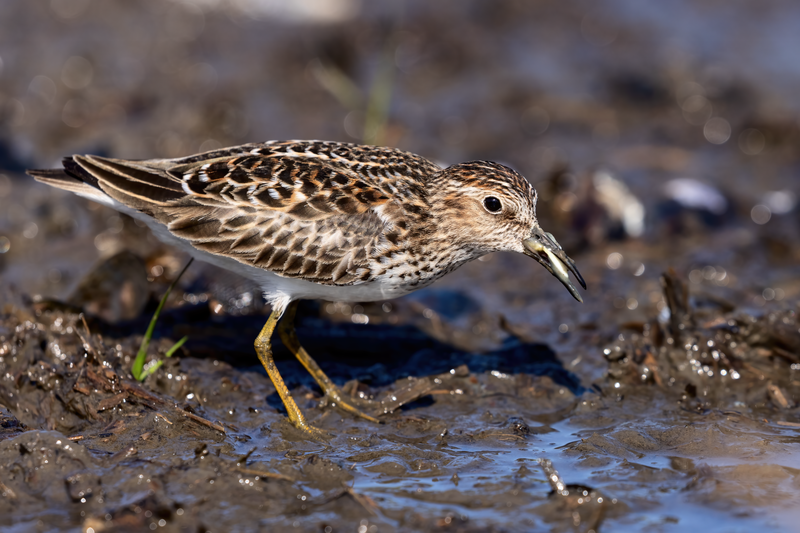
The least sandpiper is the smallest species of shorebird and is easily recognized due to its size. It belongs to the genus Calidris, which is derived from Ancient Greek and was first used by Aristotle to describe grey-colored birds which lived near water.
The specific name minutilla is from Medieval Latin and means “very small”. This species is not only small in size, but also in population, and is found mainly in North and South America. It is migratory and travels to different areas depending on the season.
The least sandpiper is an important part of the shorebird family, and their presence helps maintain the health of the shorelines they inhabit.
| Kingdom | Animalia |
| Phylum | Chordata |
| Class | Aves |
| Order | Charadriiformes |
| Family | Scolopacidae |
| Genus | Calidris |
| Species | C. minutilla |
7. Black-Necked Stilt
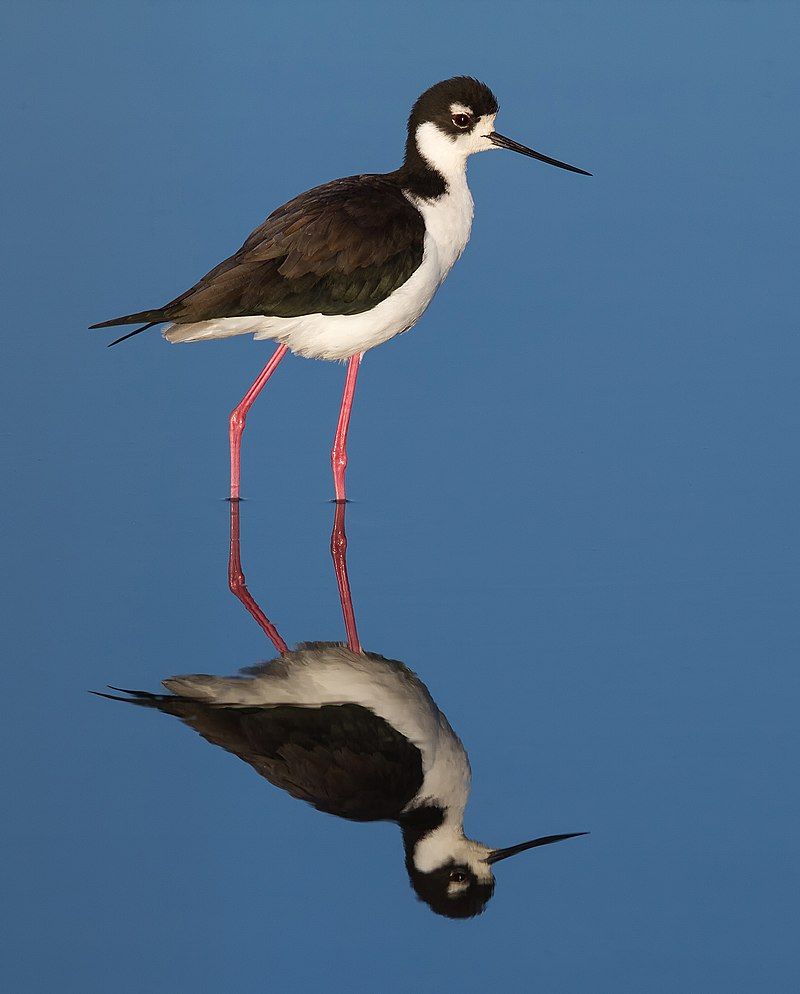
The black-necked stilt is a species of shorebird commonly found in wetlands and coastlines of the United States. This species is particularly abundant in the western region of the country, though its range extends from California to the interior parts of the US.
Black-necked stilts inhabit a variety of wetland habitats, including marshes, shallow lakes, mudflats, and coastal estuaries.
They can also be found in man-made wetlands, such as drainage ditches, irrigation canals, and sewage ponds. These elegant shorebirds are easily identified by their long, thin pink legs, black and white plumage, and long, thin red beaks.
They feed mostly on small invertebrates, such as insects, crustaceans, and mollusks, which they find in the shallow water of their habitats. Black-necked stilts also feed on tiny fish or frogs.
During the breeding season, they build their nests in shallow depressions on the ground and lay three to four eggs. Black-necked stilts are threatened by a variety of human activities, including habitat destruction and pollution.
As wetlands are drained for development and other human activities, these birds lose their natural habitats and the food resources they depend on.
In addition, runoff from industrial and agricultural activities can contaminate their wetlands, making them unsuitable for nesting and feeding. Conservation efforts are needed to protect this species and ensure its continued presence in American wetlands and coastlines.
| Kingdom | Animalia |
| Phylum | Chordata |
| Class | Aves |
| Order | Charadriiformes |
| Family | Recurvirostridae |
| Genus | Himantopus |
| Species | H. mexicanus |
8. Long-Billed Curlew
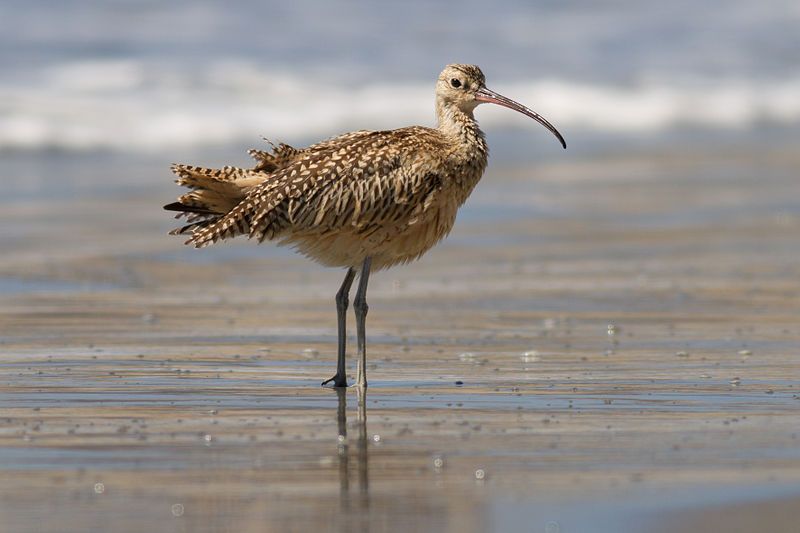
The long-billed curlew is a large shorebird that belongs to the Scolopacidae family. It’s distinctive long bill gives it a unique appearance, and it has also been given the nicknames “sickle-bird” and “candlestick bird”.
This species is native to North America, and breeds mainly in the central and western regions of the continent. During the winter months, these birds migrate southward and coastward in order to find a warmer climate.
This species is an important part of the food chain, as its diet consists of insects, larvae, worms, and other invertebrates.
The long-billed curlew has been listed as a species of land bird in need of conservation in the United States, and its population has been showing a decline in recent years.
This species is important to the environment, as its presence helps to control the invertebrate population, and it is also an important part of the food web. As such, it is important to protect this species and its habitat, in order to ensure its continued survival.
| Kingdom | Animalia |
| Phylum | Chordata |
| Class | Aves |
| Order | Charadriiformes |
| Family | Scolopacidae |
| Genus | Numenius |
| Species | N. americanus |
9. Long-Billed Dowitcher
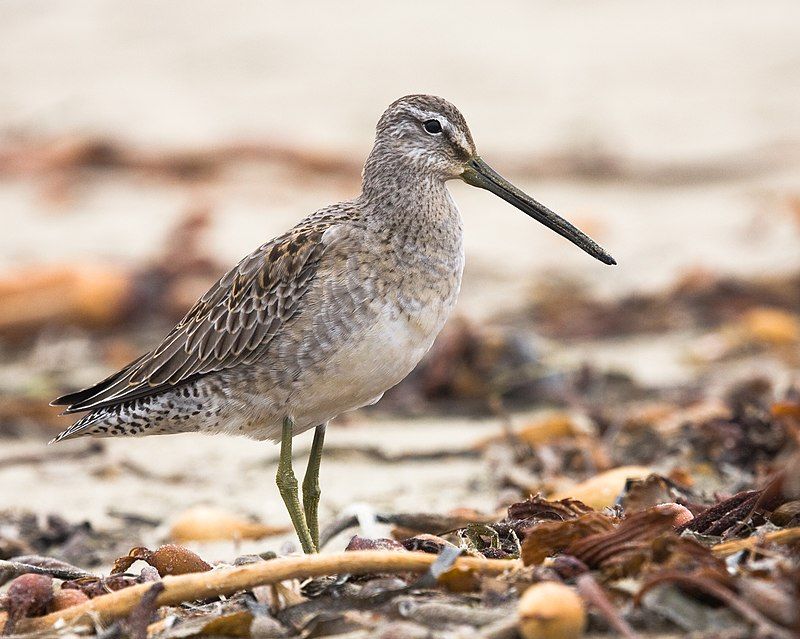
The long-billed dowitcher is a distinctive shorebird belonging to the sandpiper family, Scolopacidae. Its distinguishing feature is its long bill and in breeding plumage, adults can be identified by the rufous coloration on their head and underparts.
The back of the dowitcher is darker and mottled while its most visible marking is the large white upper rump which is only visible when the bird is in flight. This unique species of shorebird is a sight to behold, especially when in flight and displaying its white rump patch.
| Kingdom | Animalia |
| Phylum | Chordata |
| Class | Aves |
| Order | Charadriiformes |
| Family | Scolopacidae |
| Genus | Limnodromus |
| Species | L. scolopaceus |
10. Western Sandpiper
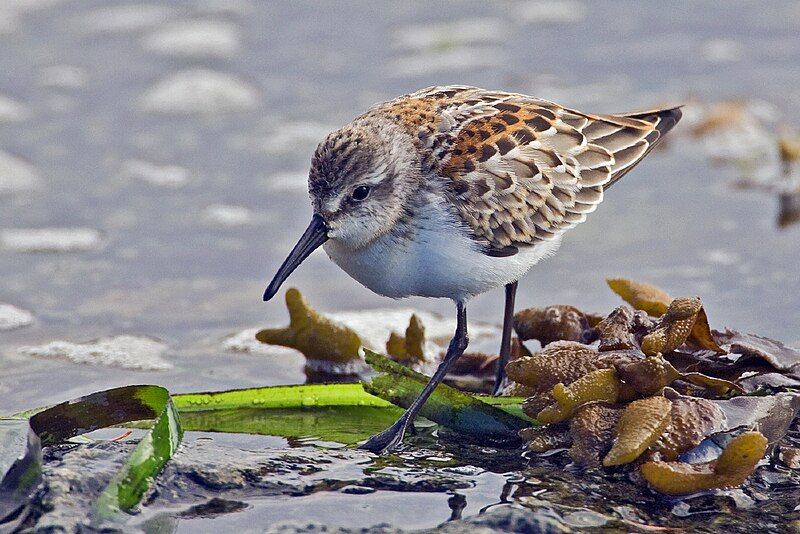
The western sandpiper is a small shorebird that belongs to the genus Calidris. Its name is derived from Ancient Greek, where kalidris or skalidris was used by Aristotle to describe grey-colored waterside birds.
The specific mauri in its name commemorates Italian botanist Ernesto Mauri, who likely studied the species and made significant contributions to the field of botany. The western sandpiper is a migratory bird, usually found in the northern hemisphere.
It has a grey-brown color, with a dark grey back and wings. Its bill is short and thin, and its tail is mostly white. It feeds on small invertebrates, such as insects, worms, and crustaceans, which it finds in the mudflats and shallow waters along the shore.
It is an important species in many ecosystems, providing food for many larger animals and helping to maintain the balance of the food web.
| Kingdom | Animalia |
| Phylum | Chordata |
| Class | Aves |
| Order | Charadriiformes |
| Family | Scolopacidae |
| Genus | Calidris |
| Species | C. mauri |
Conclusion
Birds are an important part of the Emeryville ecosystem. They provide food, habitat, and other important services to the local environment.
The City of Emeryville has taken steps to protect and enhance bird populations, including creating a bird sanctuary and providing nesting boxes in parks.
By continuing to protect and enhance bird populations, Emeryville can ensure that its avian inhabitants remain an integral part of the city’s ecosystem.